How to make a hand-carved shell cameo
from the shell
|
|
Carving a cameo is a very delicate operation. Click on the pictures to watch the videos |
|
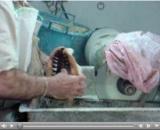 |
After an initial selection, in which the form, size and thickness are assessed, the shell is cut into two with a steel saw. The less valuable part is used for souvenirs, whereas the best part, the "cup"
or "coppa"(the "belly" of the shell) is then smoothed and trimmed.
|
|
After being divided in two, the
thicker and colored part is signed with a waterproof pen by a segnatore,
who decides cameos shape according to shells' shape. This is the moment when the segnatore decides the form that the cameo will take: rectangular, oval or elongated. As with precious stones, the cut is carefully studied to ensure that the piece of shell is exploited in the best possible
way.
|
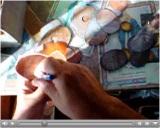 |
|
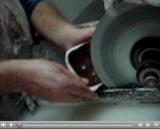 |
The "coppa", the part of the shell to be used for cameos,
is then divided further into smaller pieces by a cutter, called "tagliatore"
following the instructions of the "segnatore". |
|
The back of these pieces of shell are
then smoothed and rounded by the aggarbatore, and they are ready to go
in the carvers' hands. |
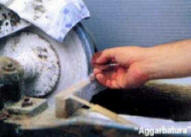
|
|
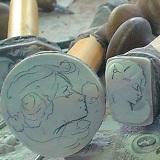 |
At the end of these preliminary procedures, the trimmed shell is stuck onto a short wooden stick with shellac, making it easier to handle, and its rough outer layer is ground down to the right thickness. At this point the artist allows the form of the piece to inspire his choice of subject.
|
|
After drawing a sketch of the subject matter on the shell,
the carver uses traditional cameo carving tools called
bulino already used 5000 years
ago and reintroduced
by Italian carvers several hundred years ago to create the figures to be engraved, from the traditional women's profiles to more complex designs. Most
carvers do all the work by hand, therefore they are sitting next to the
window in order to take advantage of the natural light. Cameos can take a few days or months to
complete. |
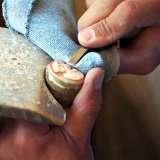 |
|
|

